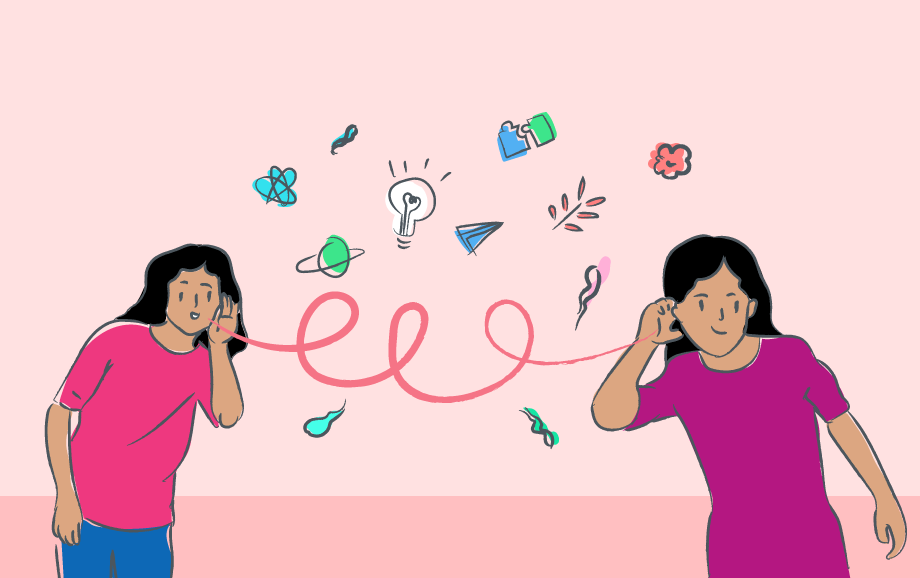“You could never convince a monkey to give you a banana by promising him limitless bananas after death in monkey heaven.”
― Yuval Noah Harari, “Sapiens: A Brief History of Humankind”
How to make your organization's story truly powerful and counter existing narratives or foster new ideals.

Stories are how we relate to each other as humans and establish emotional connections. We are told stories as children and continue to tell them throughout our lives. Politicians tell us stories about their vision, and businesses tell us stories about their brands. We tell stories to those around us everyday to teach, entertain, and motivate.
This human ability to tell stories is what differentiates us from other animals and led to the success of our species, writes Yuval Noah Harari in Sapiens: A Brief History of Humankind. Harari’s key insight is that language gave us the ability to talk about things that are not real.
“You could never convince a monkey to give you a banana by promising him limitless bananas after death in monkey heaven.”
― Yuval Noah Harari, “Sapiens: A Brief History of Humankind”
Storytelling gave Homo sapiens the ability to gossip, relate history, and create belief systems, as well as television dramas and dreams of the future. The transmission of these ideas means we can and do cooperate on a large scale, sharing concepts and ideals. This can be positive or negative. Think about how people can be convinced to receive vaccines or not. It is through the power of stories connected with each issue.
We humans can also change our collective beliefs. For example, we can decide that discrimination based on skin color is not acceptable, that human trafficking needs to be eliminated, or that women should have equal rights. We can also reckon with history and acknowledge previous human cruelties like slavery.
Your organization has a story to tell that can counter existing narratives or foster new ideals. As a storyteller, you have the opportunity to connect with your audience on a very deep level to make people feel, think, and act. Here is how you can make your story truly powerful.
Some types of storytelling appeal to some audiences more than others, and some are more practical for storyteller. Here are four different ways to tell your stories.
Think how you can use these different storytelling methods. Think about your audience and which method of storytelling they would find most appealing. What will they pay attention to? You can also use a mixture of storytelling methods, depending on the situation.
Oral storytelling
We spoke before we learned to write. This is true of both ancient and modern people. Preliterate oral culture is still vigorously alive among some populations, such as indigenous groups in Australia, where song, chants, and spoken stories pass ideas from one generation to another.
Listening to a human voice can be very compelling, especially the voice of an authority figure. Imagine how powerful a simple message from a famous and highly respected singer could be when transmitted to your audience.
Podcasts are a modern storytelling medium that can make words travel far. They often feature real people telling their stories and can reach audiences all around the globe. Consider using audio interviews or voice recordings to share your story with your audience. You could also create a voice message campaign that people could simply forward to their friends. This would be particularly effective for audiences with low literacy rates.
Visual storytelling
Ancient cave paintings and modern Instagram feeds both tell stories, stories that people can see and follow.
Remember, anyone can take a photograph with the touch of a button. It only becomes a story if there is a message in the image or an idea in a series of images. It’s how you tell the story with the photographs that matters. That is the true art of storytelling.
Written storytelling
The invention of the printing press made the written word a medium of mass communication. New forms of storytelling—novels, essays, newspapers, and tracts—could now reach enormous audiences.
Handwriting still has a special power. Witty, humorous protest signs are irresistible. Photographs of actual handwriting can add a touch of human passion and personality to your message that keyboard text cannot provide.
Digital storytelling
The smartphone has emerged as a world-changing device that brings together text and images, video and sound into an unprecedented storytelling tool. The power of a printer, a publisher, or a movie producer can be held in our own hands.
Everyday, people are telling their own stories in posts on social media. Everyone is a storyteller.
Social media is fast, creative, and adaptive. Blogs are better for telling longer stories. You can use more words. Tweets are great for short, sharp announcements and observations, but people have adapted limited-character formats to tell longer stories by linking several posts together. This happens on other platforms, too. Users create new ways to tell stories.
There are four key elements common to all good stories. Look for them in the stories around you, whether it’s a Netflix drama or gossip from your neighborhood. Watch this video to find out what they are.
The 4Ps of Storytelling